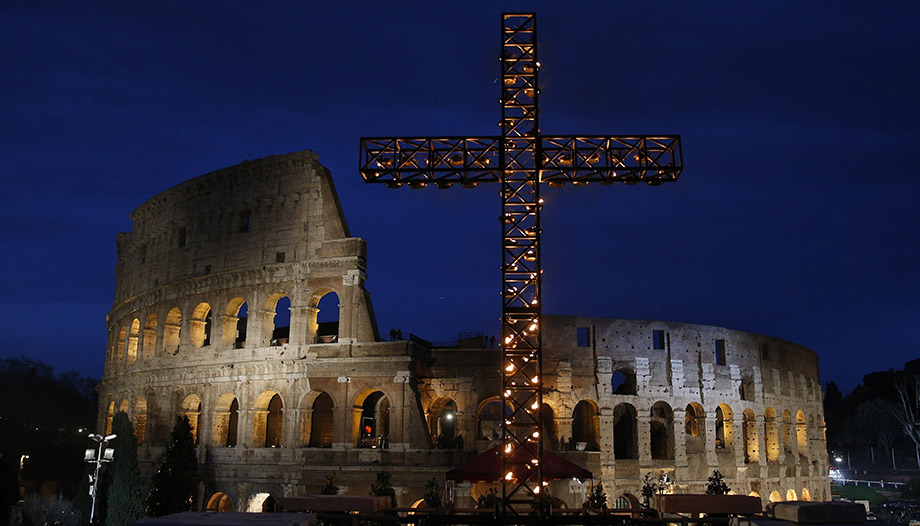Translation of the article into Italian
The tradition of the Stations of the Cross in Rome has its roots in the 18th century, when a group of the faithful began to gather together with the Franciscan missionary Leonardo da Porto Mauorizio on Sundays early in the morning at the friary of St. Bonaventure on the Palatine Hill to pray the Stations of the Cross.
This priest was one of the great promoters of the devotion to the Way of the Cross, moved by the fervor that this practice of piety aroused in those who performed it. In fact, this Franciscan missionary is credited with the creation of more than half a thousand Stations of the Cross in Italy alone. Leonardo da Porto asked Pope Benedict XIV for permission to form a confraternity and organize the Via Crucis in the Flavian Amphitheater in order to unite these prayers to the Via Crucis.
a series of meditations on the Passion of Jesus. Permission was granted on December 13, 1749 and, after a few months, work began to build the fourteen Stations of the Cross inside the Colosseum. The Pope accepted and entrusted Cardinal Vicar Giovanni Antonio Guadagni with the creation of the association. In the meantime, he ordered the renovation of the fourteen edicule that were already around the arena.
The Colosseum had been a place of veneration since the 5th century, and inside it the Chapel of the Pietà had been erected in the 15th century. In fact, in previous decades, the Colosseum had hosted sacred performances, and Pope Clement X had consecrated it to the memory of the Passion. However, when Leonardo da Porto Maurizio's request arrived, it had long since fallen into disuse and was in rather deplorable condition.
The new Archconfraternity of the Lovers of Jesus and Mary on Calvary was erected on December 17, 1750, and ten days later, the aedicules and the cross of the Coliseum were blessed. From that moment on, the Archconfraternity carried out the rite of the Via Crucis every Friday and Sunday, on various anniversaries and during Holy Week, traveling the
Via Sacra to the Flavian Amphitheater. For about 100 years, the practice of the Via Crucis in the Roman Colosseum had a large participation of the faithful. However, it declined when in 1874 the cross was removed due to the discovery of constructions in the lower area.
In 1926 the cross would return to the floor of the circus. The great Cross of the Archconfraternity of the Lovers of Jesus and Mary of Calvary has been in the church of San Gregorio Magno dei Muratori since 1937. In 1959 St. John XXIII restored the rite of the Via Crucis in the Colosseum and, shortly after, St. Paul VI would return to this pious exercise. Since then, successive Popes have publicly prayed this Way of the Cross at sunset on Good Friday together with hundreds of faithful who, every year, walk and meditate on the Passion of the Lord together with the ancient and modern sufferings of Humanity on the arena of the amphitheater.











